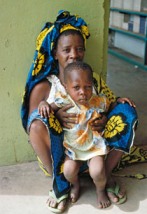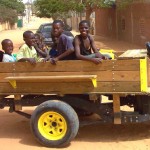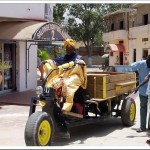According to multiple surveys, newspaper articles, and books, maternal mortality in Africa hinders economic and societal development in many countries. Let’s look at what the World Bank says in its recent report on the issue.
 There’s a relationship between mobility, power and well being. The differences between male and female travel patterns and the cultural rules and roles associated with these differences are under charted in the policy environment. The impact of constrained mobility on bargaining also has its impact on what comes to be available as resource and service within local constraints. And as a conclusion, the authors of the report suggest several solutions for the challenge:
There’s a relationship between mobility, power and well being. The differences between male and female travel patterns and the cultural rules and roles associated with these differences are under charted in the policy environment. The impact of constrained mobility on bargaining also has its impact on what comes to be available as resource and service within local constraints. And as a conclusion, the authors of the report suggest several solutions for the challenge:
- Specific transport and maternal mortality projects (safe motherhood transport plans – Malawi, transport within safe motherhood unions – Zegoua, Mali, targeted approaches which integrate transport – Senegal and Mali, using the existing fleet of vehicles: the yellow flag initiative in West Africa);
- Mobile maternal health clinics;
- Roadside wellness centers: the intersection of health needs, and so on.
But as we all know, due to the lack of financial resources in Africa some of these solutions might not materialize in the nearest future, unfortunately… Yet I dare to offer a viable low-cost solution to the challenge of maternal mortality in Africa. One Basic Utility Vehicle (BUV) can serve both as an ambulance and as a means to deliver life-saving medicine and equipment to a distant village where locals are not blessed with a health clinic or a health care professional. For just a few thousand US dollars we could start saving lives today – not to wait until a road or heath care infrastructure is built. Just a thought…

